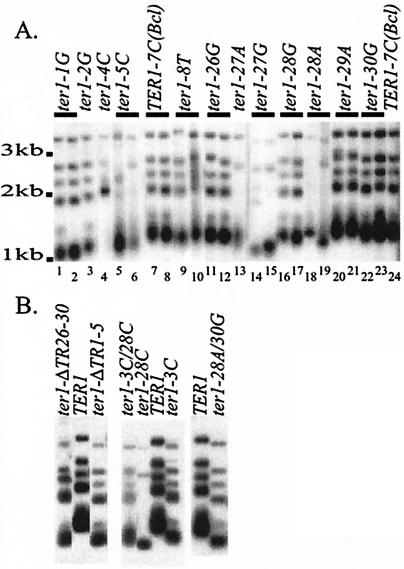FIG. 3.
Point mutations in TR1-5 and TR26-30 often lead to telomere shortening. (A) Southern blots of EcoRI-digested genomic DNA hybridized with a telomeric probe are shown. The names of the TER1 alleles are shown above the lanes. Lines above the lanes indicate that two clones containing the mutation are shown. The 40th streak was used. Lanes labeled TER1-7C(Bcl) show telomeres that were wild type in length. (B) Southern blots of telomeres from strains containing the TR deletion mutations and double mutations are shown as in panel A. The mutants are shown at the 1st (ter1-ΔTR1-5, ter1-ΔTR26-30, and ter1-28A/30G), 5th (ter1-3C and ter1-3C/28C), or 10th (ter1-28C) streak. In each mutant, telomere lengths did not change after streak 1.

